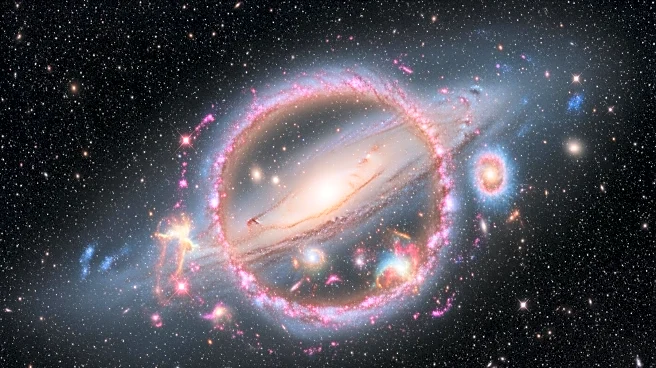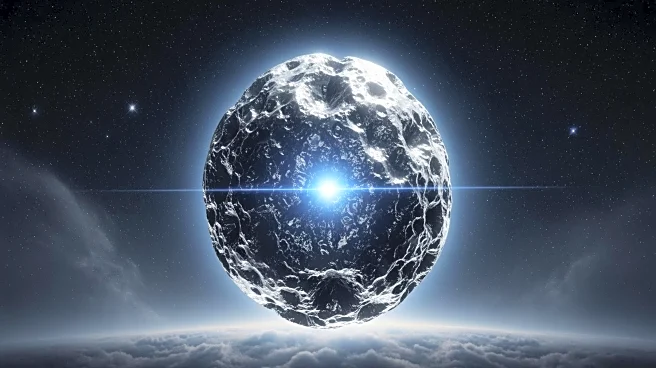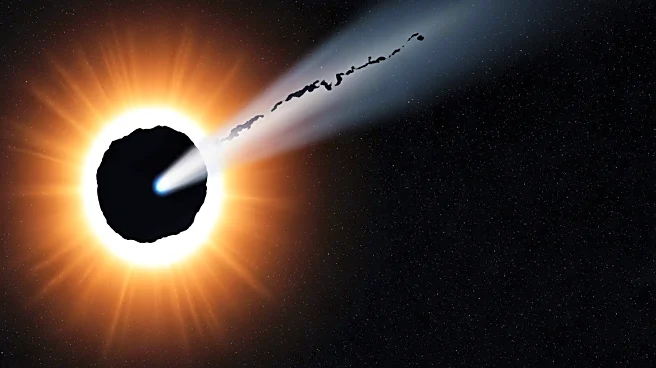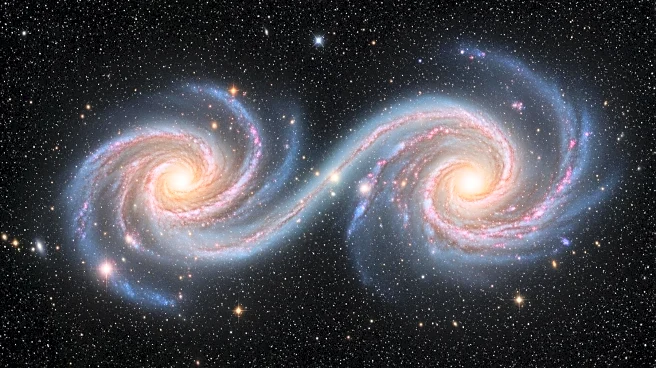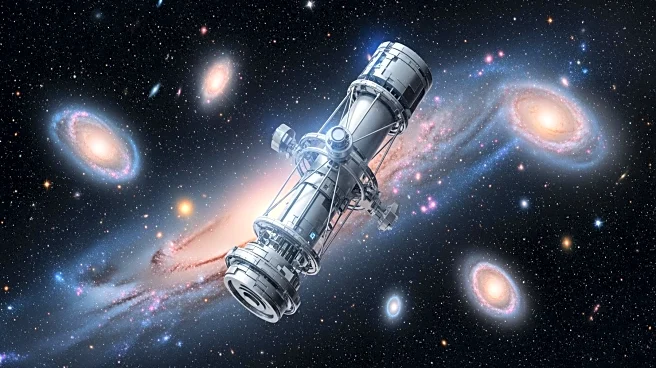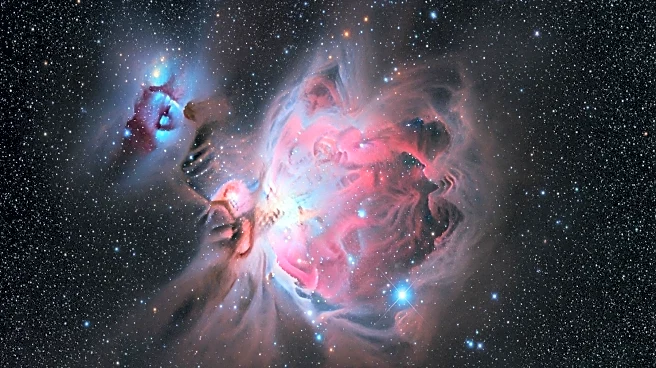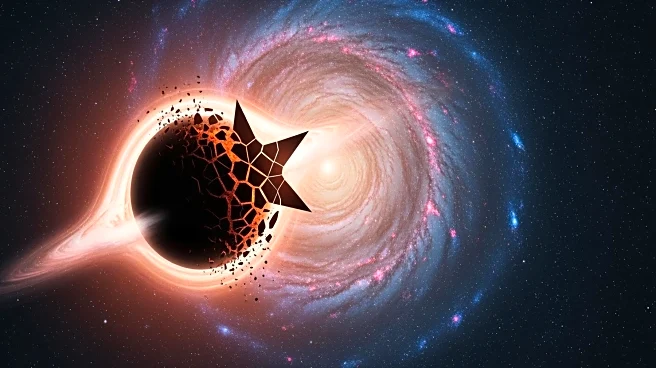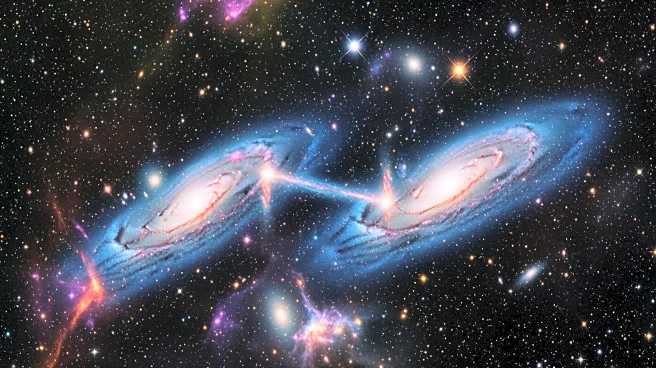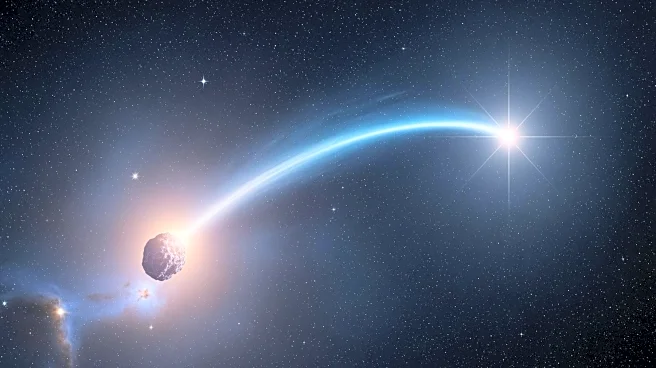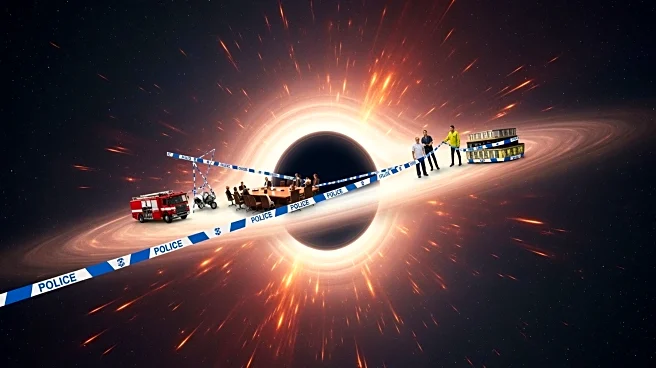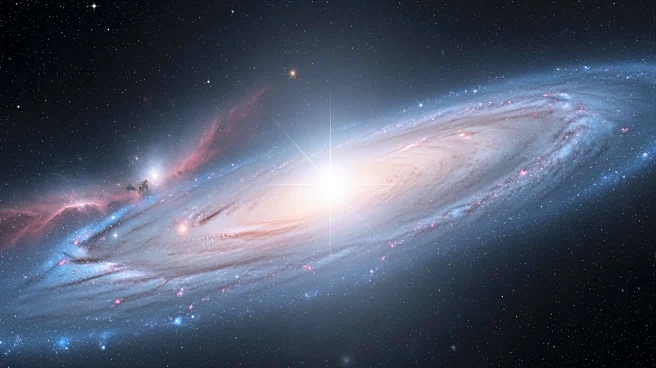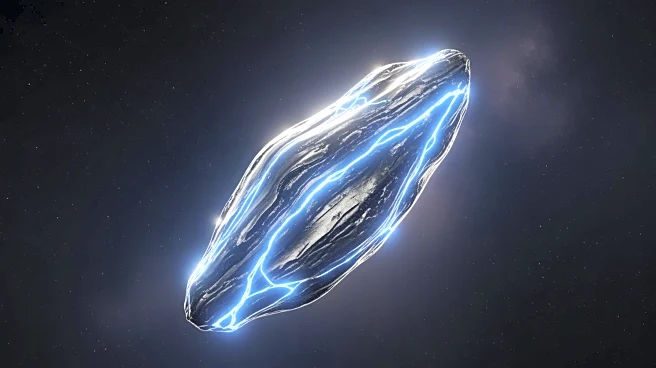What's Happening?
The Hubble Space Telescope has captured a striking image of the barred spiral galaxy NGC 6951, located 70 million light-years away in the constellation Cepheus. This galaxy is notable for its circumnuclear starburst ring, a feature that spans approximately
3,800 light years and is a hub of intense star formation. The bar of stars crossing the galaxy's core acts as a conveyor belt, channeling cold gas inward, which compresses and triggers the birth of new stars. Astronomers have identified over 80 potential star clusters within this ring, many of which are less than 100 million years old. The galaxy itself has likely existed for over a billion years, showcasing the dynamic processes of star birth and death that contribute to the evolution of galaxies.
Why It's Important?
The observations of NGC 6951 by the Hubble Space Telescope provide critical insights into the processes of star formation and galactic evolution. Understanding how galaxies like NGC 6951 recycle material through generations of star birth and death is essential for comprehending the broader dynamics of the universe. The starburst ring phenomenon highlights the role of galactic structures in facilitating stellar activity, which can influence the development of galaxies over time. These findings contribute to the field of astronomy by offering a detailed view of how galaxies form and evolve, potentially impacting theories related to cosmic development and the lifecycle of stars.
What's Next?
Continued observations by the Hubble Space Telescope and other astronomical instruments will likely focus on further analyzing the starburst ring and the star clusters within NGC 6951. Researchers may aim to understand the lifecycle of these clusters and the conditions that lead to such intense star formation. Additionally, these studies could inform future missions and technologies designed to explore distant galaxies, enhancing our understanding of the universe's structure and the processes that govern it.
Beyond the Headlines
The study of NGC 6951 and its starburst ring may have implications for understanding the environmental conditions necessary for star formation. This could lead to broader insights into the potential for life-supporting conditions in other parts of the universe. Furthermore, the data collected by Hubble could aid in refining models of galactic evolution, offering a more comprehensive picture of how galaxies interact and change over time.
